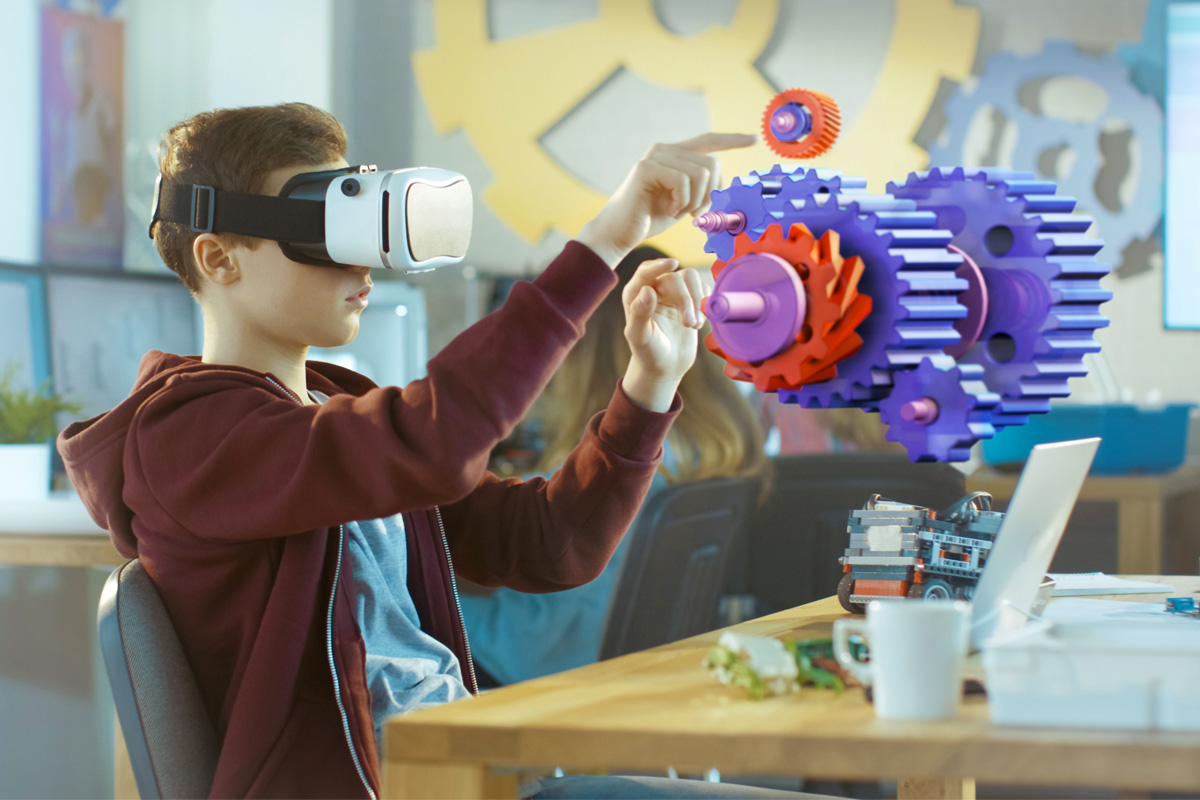The Internet of Things (IoT) is transforming the way we live – from how we work to how we shop to how we seek our entertainment. However, IoT may wield its greatest influence in the educational setting. Indeed, it’s becoming increasingly apparent that the IoT may well shape and define the future of education.

Interactive Learning
One of the most significant attributes of the IoT in the education environment is the unprecedented capacity of this technology to support interactive learning. Whether in the traditional, face-to-face classroom or the virtual one, IoT devices give students more opportunities to actively engage with the instructor, with classmates, and with the learning materials.
For example, smart devices, such as interactive whiteboards, enable students to modify charts, texts, and other material on the whiteboard from their desks using an internet-connected tablet or from their home device during virtual learning. This replaces the traditional model of education, in which students passively absorb content communicated by the instructor, with a learning model that is far more active and collaborative.
Immersive Learning
Perhaps one of the most exciting technological innovations to make it into the modern classroom is that of augmented and virtual reality (AR/VR) systems. Devices such as AR glasses and untethered VR headsets can provide a truly immersive learning experience.
For instance, these devices can enable history students to take a simulated tour of the hanging gardens of Babylon during the time of Nebuchadnezzar. They can allow biology students to stand alongside a scaled simulation of a gigantic blue whale. The possibilities, in this regard, are seemingly endless.

Personalized Learning
In addition to unleashing the potential of interactive and immersive learning, IoT devices are also making it easier than ever for educators to personalize students’ learning experiences. AR technologies are now emerging to enable smart glasses to better support non-traditional students and those with special learning needs. This includes, for example, translation capabilities built into smart glasses to facilitate communication with students who are not native speakers of the primary language(s) used in the classroom.
Smart “hearable” devices are also being used to help students learn a second language. These devices incorporate artificial intelligence (AI) and machine learning to tailor language lessons to the student’s individual needs (and proficiency levels).
Increasing Tech Proficiency
Another profound benefit of IoT devices in the classroom derives from the amount of exposure to technology that students will experience throughout their academic careers. Today’s youth are already coming of age amid a new technological revolution. However, integrating the IoT and education will inevitably help define students’ orientations toward technology.
A key example of this may lie in evolving attitudes toward electric vehicles (EV) and self-driving automobile technologies. Unfamiliarity with these technologies has held back acceptance, particularly for older generations whose first experiences with cars, whether as passengers or drivers, have been traditional ones.
Those who first learned to drive on a standard automobile may experience trepidation concerning autonomous controls or electric power. Conversely, students using AR/VR headsets in the classroom, controlling interactive whiteboards on their wireless tablets, and learning how to drive in an electric car can be expected to be far more open to EV and related technologies than previous generations.
Gamification and Education
Young adults and household pets alike learn best through play. However, traditional education models made learning through play difficult, if not downright impossible. After all, it’s pretty challenging to manage 30 students all engaged in a game and ensure they’re learning from the game simultaneously.
With the advent of smart toys, though, children, teens, and even young adults can experience the benefits of learning through play. These devices integrate AI systems and smart cameras, microphones, and other devices to help students learn by engaging with the toy. Interacting with these toys can teach students, among other things, computer programming skills, robotics and mechanics, and engineering and physics.
Those studying biology or geology may even program their smart toy to explore the grounds of their school campus, their community, or even their backyard, collecting rock and soil samples. Such learning through play may lead to a career in environmental science, ecology, or other fields where nature and technology intersect.

The Takeaway
The Internet of Things (IoT) has truly changed our world. However, with its increasing integration in the classroom, it’s also promising to change our future. The IoT revolutionizes modern education by making it more interactive and more immersive. These devices also provide educators with even greater power to personalize their students’ learning experience. Best of all, perhaps, is that the IoT makes it easier than ever before for students to learn through play.
Of course, as with any smart device connected to the internet, there will be the need for appropriate privacy controls and diligent attention to safety.
How Ambiq Contributes
Smart IoT devices require reliable and ultra-low-energy components for a seamless user experience. Additionally, their processors must be optimized to perform these tasks on a low electric charge. The Apollo3 Blue SoC has set a new standard in energy efficiency for battery-powered devices with an integrated Arm® Cortex®-M4 processor with Floating Point Unit (FPU) and turboSPOT®, increasing computational capabilities while dramatically lowering the active power consumption.
For the last ten years, Ambiq® has been laser-focused on inventing and delivering the most revolutionary System on Chip (SoC) solutions in the market. Through the advanced Subthreshold Power Optimized Technology (SPOT®) platform, Ambiq has helped many leading manufacturers worldwide create products that can operate for days, months, and sometimes years on a lithium battery or a single charge.
Ambiq Editorial Team


